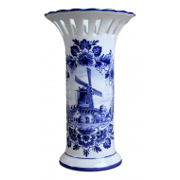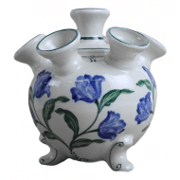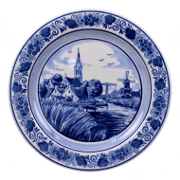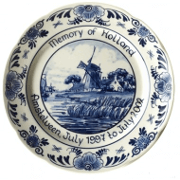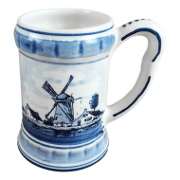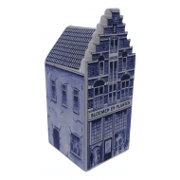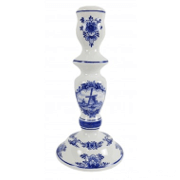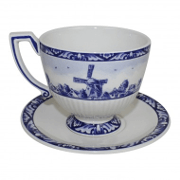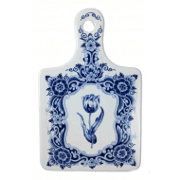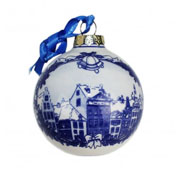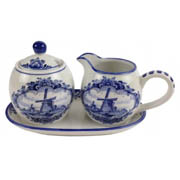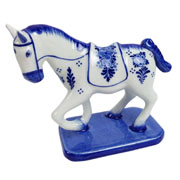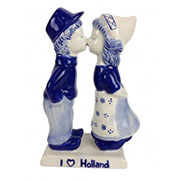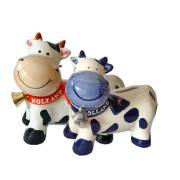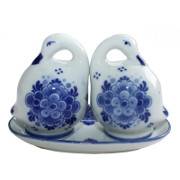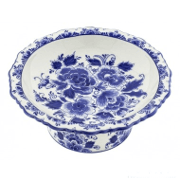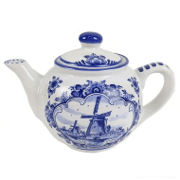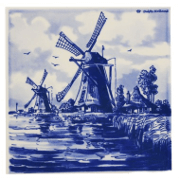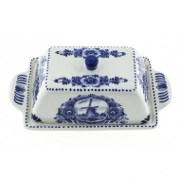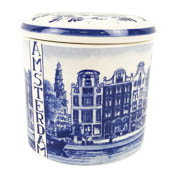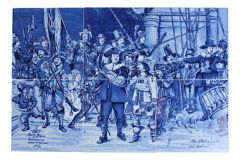Delft Blue - Dutch Delft Blue Souvenirs and gifts
The Holland Winkel offers a selection of hundreds of different delft blue products. In our web store you can find souvenirs and hand-painted pottery. We can usually can ship your order the same day directly from inventory.
We have a huge selection of Delft Blue vases, Delft Blue Windmills and of course the famous Delft blue kissing couple. It is also possible to have a souvenir plate or a birthplate created painted with your own texts.
Delft Blue in the Netherlands
After getting acquainted with the refined Chinese porcelain in the Golden Age (1600-1700) potteries in Europe tried to recreate this beautiful pottery. This happened in Delft, among others places, where the world-famous Delft Blue pottery became very similar to Chinese porcelain. Not entirely, as at first Europe lacked the required Chinese clay, kaolin. But the products had a great resemblance, and was soon called "Delft porceline". The paintings on the vases and dinnerware were at first copies of corresponding Chinese objects but it did not take long before local designs flourished. Pottery is called Delftware when the correct color scheme in blue / white is used.
What is Delft blue earthenware?
Although the name "Delftware" pottery is now perhaps more famous, the term "Delftware" is as glazed earthenware is only one of the variations of earthenware produced in Delft and the Netherlands. Earthenware has been made in the Netherlands for a long time, and other Dutch cities in Friesland, Arnhem, Gouda, Delft had earthenware factories in recent centuries and some are still there today.
Because what is Delftware actually? A definition of Delft earthenware is "All the earthenware produced in the Netherlands since about 1650, which is decorated with a tin glaze (faience) on both sides." Delft was the center of the tin glaze production in the Netherlands and also abroad making it the most well known. Delftware has thus become a generic name.
Until the middle of the 17th century Delft pottery was mainly for daily usage. Only later more purely decorative items that served to decorate an interior were created. The increasing prosperity and ever higher technical skills made it possible to make increasingly refined earthenware. These became the familiar Delft blue and the colorful polychrome variants.
The most pottery that we find in museums today is ornamental pottery. That has a very practical reason, pottery is fragile and when in use there is a high change of breakage. Most utensils have therefore been lost. Occasionally during excavations, or in shipwrecks some items are recovered.
Tin glaze or faience
Delftware is distinguished by a layer of tin glaze that has been placed over the earthenware. Although the technique had been known for some time pottery made before 1650 was often only provided with a white opaque glaze layer at the top. The pottery itself has the color of the clay (red, brown, yellow) from which it was made.
Baked pottery remains porous and an important discovery was that it was possible to cover the pottery with a layer of another material, the glaze. A glaze consists of a mixture of materials. The first glazes were made by immersing a piece of baked earthenware in a lead solution, and baking it once again. The pottery thus acquired a non-porous transparent, shiny layer. However, the early lead glaze layer were transparent. The pottery still had the color of the clay from which it was made.
 Nederlands
Nederlands

